Picking the best places in Brazil feels a bit like trying to count stars in the Amazon sky – there’s just so much to take in. From the endless stretches of coastline to the depths of the rainforest, Brazil serves up a feast of experiences that could fill a lifetime of travel. The country is huge – we’re talking about a place that could fit all of Europe inside it – and each corner tells its own unique story through food, music, and traditions that have been passed down for generations.
I’ve spent months exploring this incredible country, and still feel like I’ve barely scratched the surface. Whether you’re drawn to the rhythm of samba in Rio’s streets, the peaceful beaches of Florianópolis, or the wild wonders of the Pantanal, Brazil has something that speaks to every type of traveler.
So while this list of 20 places barely covers a fraction of what Brazil has to offer, think of it as your starter pack – a collection of destinations that showcase the country’s diversity, from busy city streets to quiet coastal towns, and everything in between. These spots aren’t ranked (because how do you even compare a pristine beach to an ancient colonial town?), but each one promises to show you a different side of Brazil’s charm.
Rio de Janeiro, Brazil
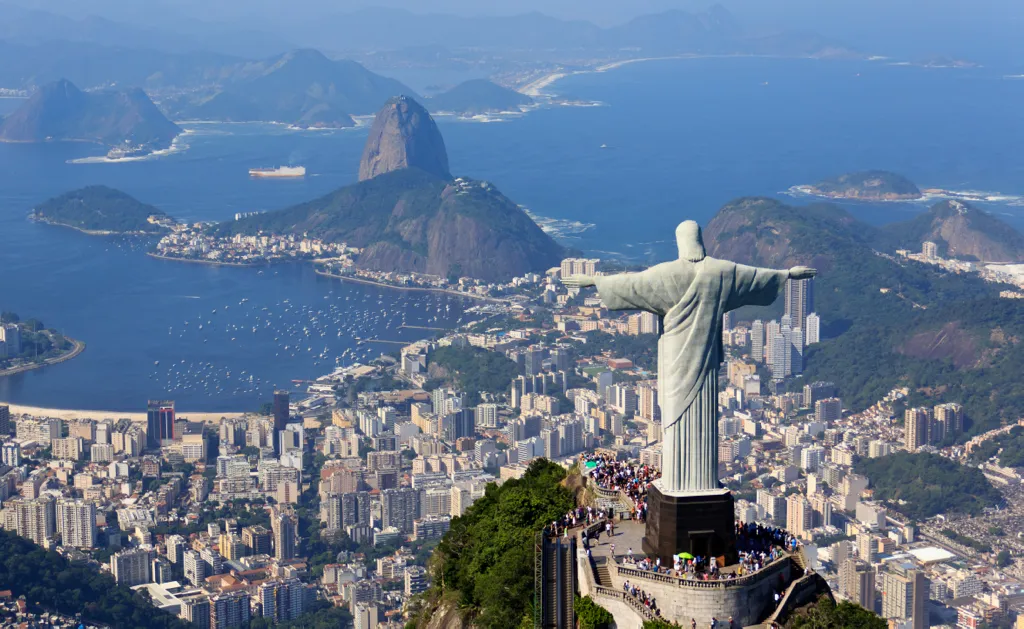
Many travelers come to Rio de Janeiro for its famous Copacabana Beach, but this Brazilian metropolis offers much more than just sandy shores. The city sits between lush mountains and blue waters, with the iconic Christ the Redeemer statue watching over it all from Corcovado Mountain. Locals and tourists mix along the patterned sidewalks of Ipanema, while the historic Santa Teresa neighborhood draws people in with its winding streets and artistic atmosphere. During Carnival season, the city erupts with samba music and colorful parades, but Rio’s energy and charm can be experienced year-round through its street food, outdoor cafes, and the warm welcome of its residents.
Fernando de Noronha, Brazil
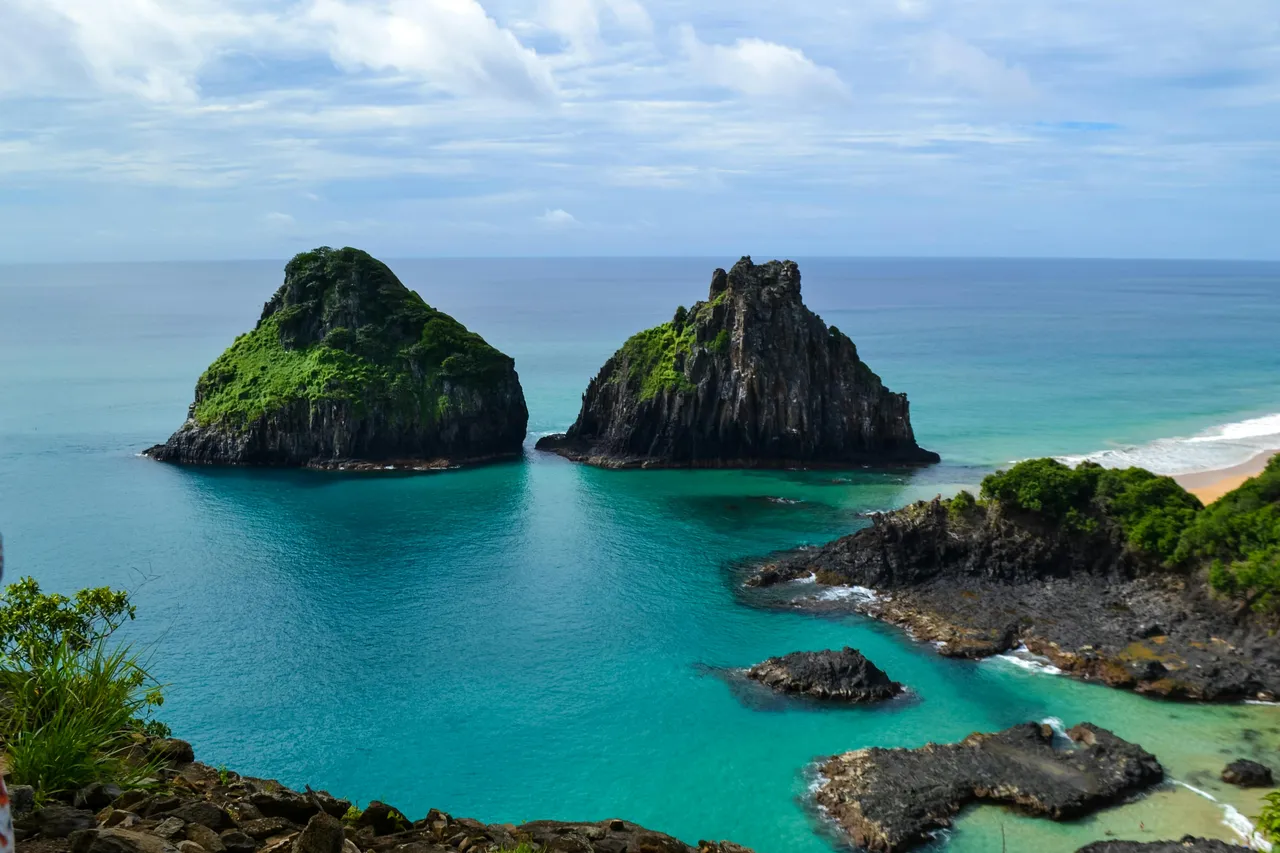
Many travelers venture to Fernando de Noronha for its clear blue waters and pristine beaches, but this Brazilian archipelago offers much more than just seaside relaxation. The collection of 21 islands sits about 220 miles off Brazil’s northeastern coast, creating a protected marine park that’s home to dolphins, sea turtles, and colorful fish. While the main island draws visitors with its snorkeling and diving spots like Baía do Sancho and Baía dos Porcos, you’ll also find good hiking trails that lead to old fortresses and quiet beaches. The islands maintain strict visitor limits to protect their natural beauty, but those who make the journey can expect to find empty beaches, good surfing spots, and local restaurants serving fresh seafood year-round.
Salvador, Bahia, Brazil
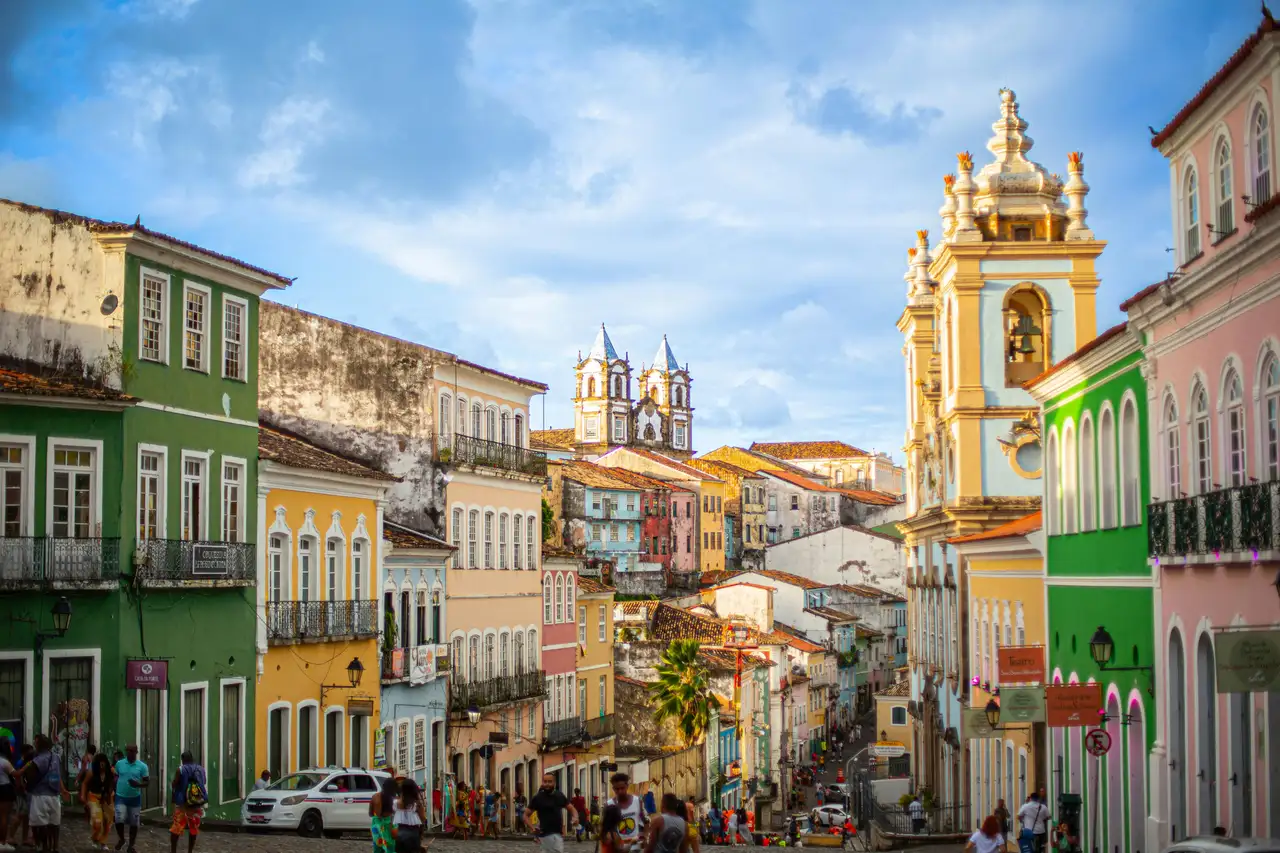
Salvador should be at the top of your Brazil bucket list. Located on the northeast coast, this lively city blends Portuguese colonial architecture with rich African influences. The historic Pelourinho district features pastel-colored buildings, cobblestone streets, and some of Brazil’s oldest churches, while the city’s famous Carnival celebrations fill the streets with samba music and dancing for days on end.
Iguazu Falls, Brazil
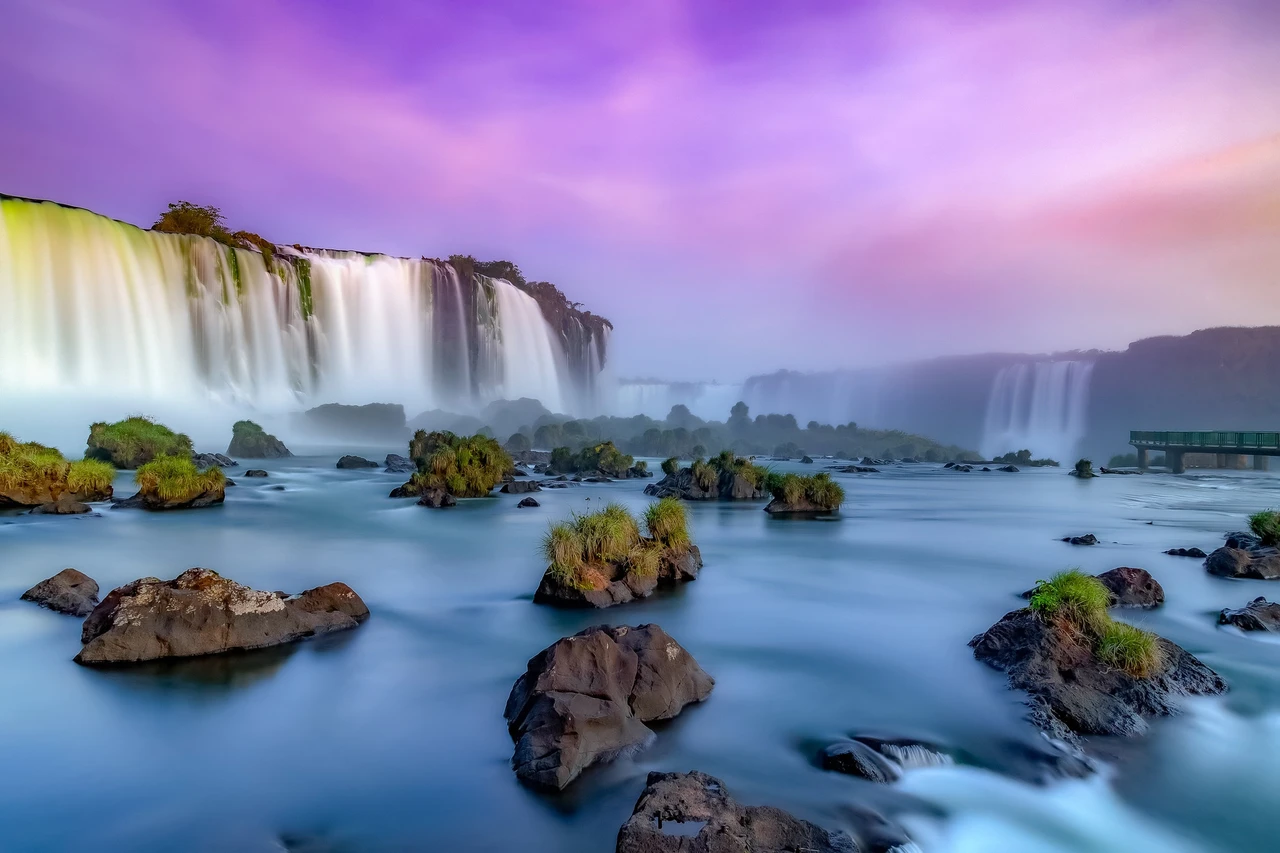
One of Brazil’s most impressive natural wonders, Iguazu Falls stands as a testament to Mother Nature’s raw power. This massive system of 275 waterfalls stretches nearly 2 miles along the border of Brazil and Argentina, creating a thunderous display that you can hear long before you see it. The Brazilian side offers the best panoramic views, with wooden walkways that let you get close enough to feel the cool mist on your face. While most visitors spend just a day here, I’d recommend staying longer to explore the surrounding rainforest trails and spot colorful toucans and butterflies floating through the air. The falls are at their most powerful after the rainy season, but even during drier months, the sight of all that water cascading down the cliffs is something that stays with you long after you’ve left.
Cool Fact:
Did you know that Iguazu Falls is so massive it makes Niagara Falls look tiny in comparison – it’s actually made up of 275 different waterfalls spanning across nearly 2 miles? The falls sit right on the border of Brazil and Argentina, which means you can view this natural wonder from both countries and get totally different experiences at each vantage point.
Amazon Rainforest, Brazil
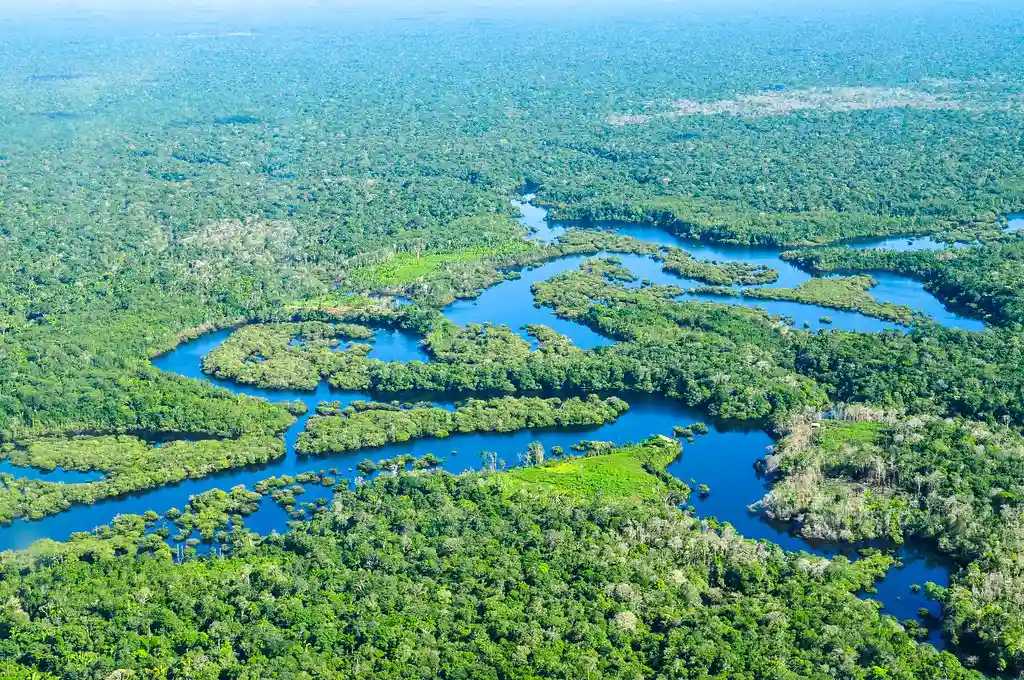
Stretching across more than half of Brazil is the legendary Amazon Rainforest, a place where nature rules supreme. Like a living, breathing organism, this vast expanse of green holds about 10% of all known species on Earth within its dense canopy and winding rivers. But unlike other forests you might visit, the Amazon feels like stepping into another world entirely. Just listen to the constant chorus of birds and monkeys echoing through the trees, and you’ll understand what I mean. Because of its incredible biodiversity and role as Earth’s largest rainforest, the Amazon has drawn scientists and adventurers for centuries, and you’ll find unique wildlife and indigenous communities that have called this forest home for thousands of years.
Florianópolis, Brazil
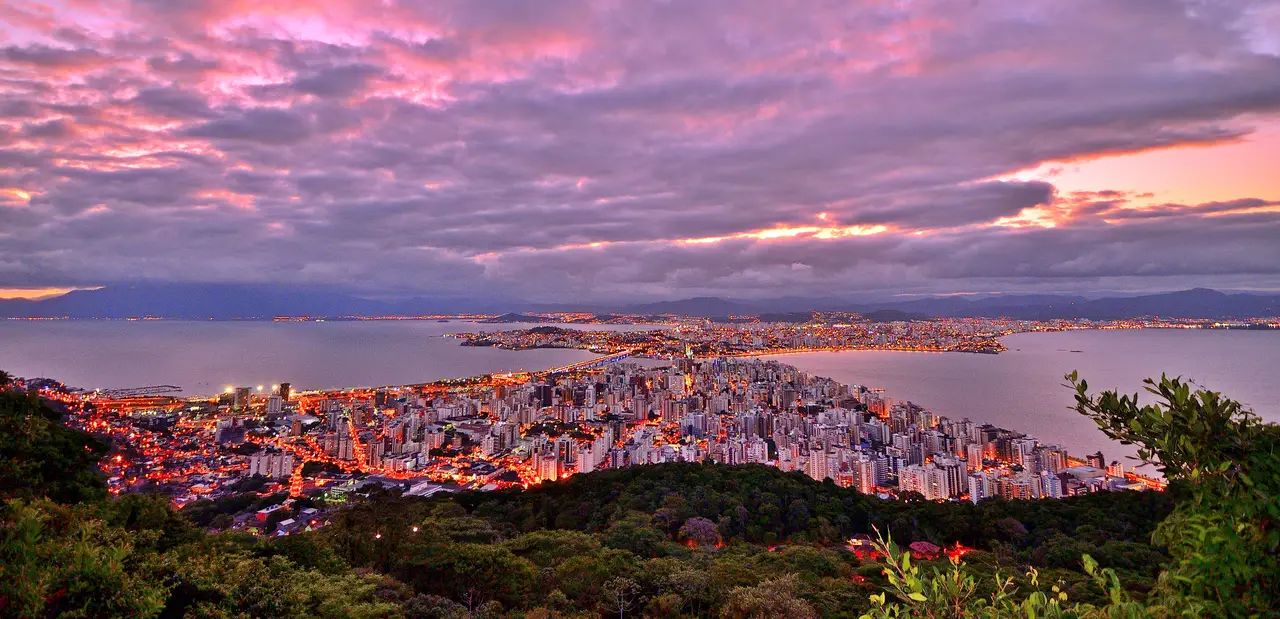
I first discovered Florianópolis while exploring Brazil’s southern coast in 2019. This island city, connected to the mainland by a bridge, sits like a pearl in the Atlantic Ocean off Santa Catarina state. Known locally as “Floripa,” the island blends together 42 beaches with dense Atlantic rainforest and traditional fishing communities that have called this place home for generations. The northern beaches like Jurerê Internacional attract Brazil’s elite with their beach clubs and upscale restaurants, while the eastern coast draws surfers to spots like Praia Mole and Joaquina. What makes Floripa special isn’t just its beaches – the historic center preserves 18th-century Portuguese architecture, and the local markets serve up fresh oysters harvested from the island’s lagoons, making it a unique slice of Brazilian coastal life.
Manaus, Brazil
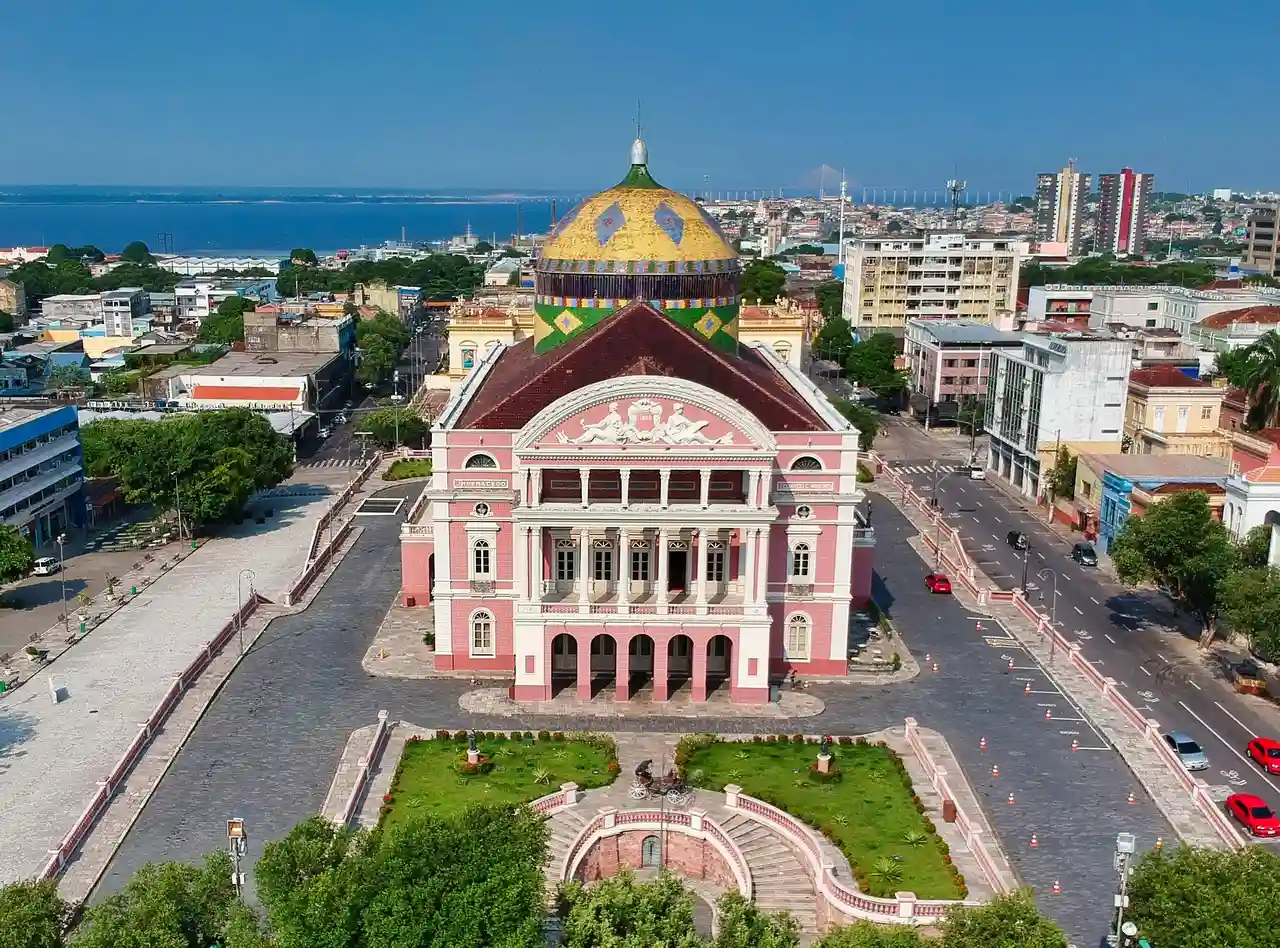
I first visited Manaus in 2018, deep in the heart of Brazil’s Amazon rainforest where the Negro and Solimões rivers meet to form the mighty Amazon. This historic port city sits as a gateway between the modern world and the untamed wilderness that surrounds it. The Amazon Theatre, built during the rubber boom of the 1890s, stands as a pink-and-white testament to the city’s wealthy past, while the nearby Meeting of Waters showcases nature’s poetry as two differently colored rivers flow side by side for miles without mixing. The Adolpho Lisboa Municipal Market, modeled after the Les Halles in Paris, brings together local vendors selling everything from exotic fruits to traditional medicines, offering visitors a genuine slice of Amazonian life.
Recife, Brazil

Known as Brazil’s “Venice of the Americas,” Recife sits proudly on the northeastern coast. Like many coastal cities in Brazil, Recife has its fair share of beaches, colonial architecture, and lively markets. But unlike the others, it’s a place where old European charm meets tropical living. Just walk along the canals cutting through the city center, dotted with centuries-old bridges, and you’ll understand why. Because of its history as a major Dutch trading port in the 1600s, many European influences can be spotted here, from the architecture to the cultural festivals. You’ll find colorful buildings standing alongside modern skyscrapers, while traditional fishing boats bob gently in the harbor nearby.
Copacabana Beach, Rio de Janeiro, Brazil
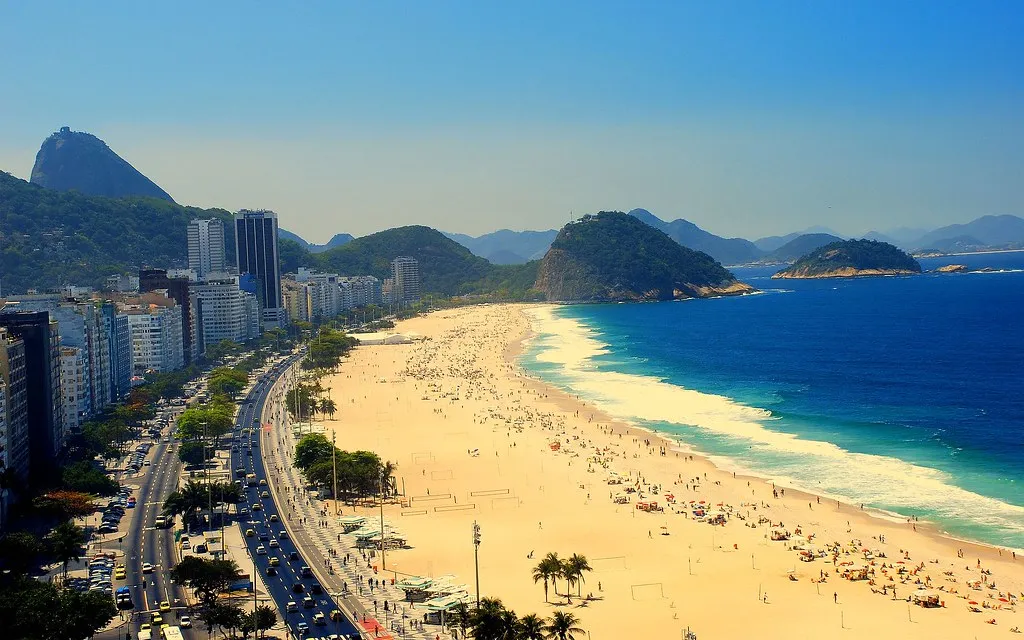
No trip to Brazil is complete without a visit to Copacabana Beach in Rio de Janeiro. This 2.5-mile stretch of golden sand isn’t just a beach – it’s the beating heart of Rio’s beach culture. Like many of Rio’s coastal areas, Copacabana comes alive with locals and tourists playing volleyball, surfing, and soaking up the sun. But what makes this beach special is its round-the-clock energy and the way it brings people together. Take a stroll along the black and white mosaic promenade, and you’ll find vendors selling coconuts, families sharing picnics, and musicians playing bossa nova. Because of its location between the ocean and the mountains, Copacabana offers some of the best people-watching in South America, especially during sunset when locals finish work and head to the beach for a game of football or a cold beer at one of the many beachfront kiosks.
Bonito, Mato Grosso do Sul, Brazil
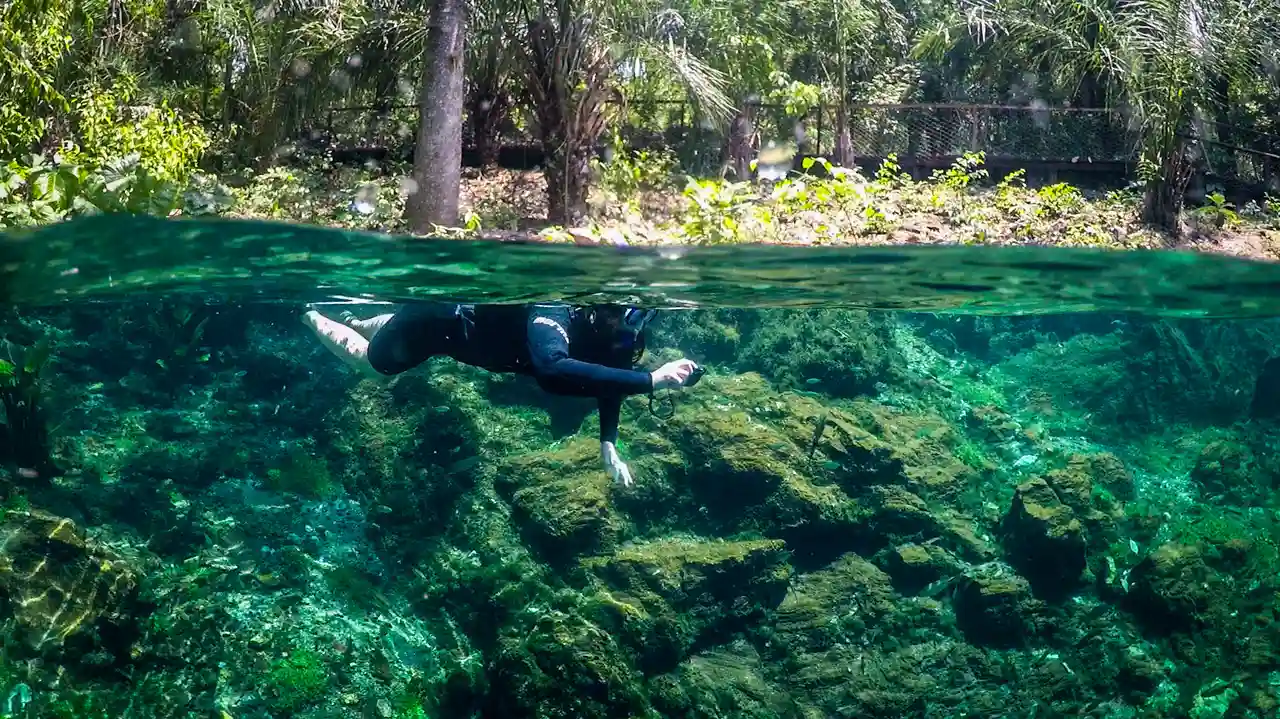
I always recommend nature lovers visit Bonito in Mato Grosso do Sul. This small town in central Brazil has become famous for its crystal-clear rivers and underwater caves, where you can snorkel alongside colorful fish and see rock formations that formed millions of years ago. The area is also home to numerous waterfalls, hiking trails, and natural springs that let you experience the raw beauty of Brazil’s countryside.
Chapada Diamantina, Bahia, Brazil
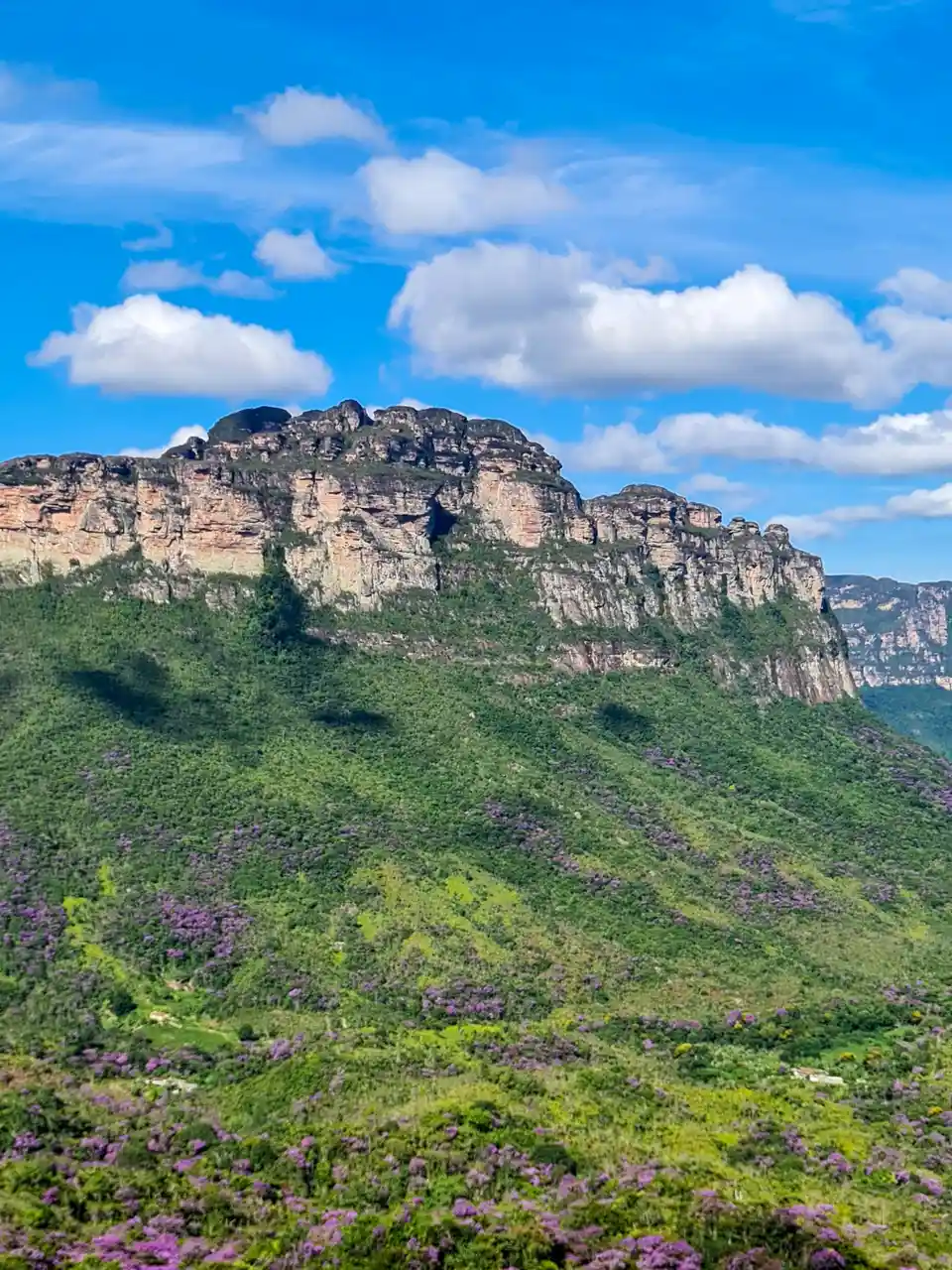
Step into Brazil’s most beautiful national park when you visit Chapada Diamantina, a natural wonderland filled with waterfalls, caves, and table-top mountains. Located in Bahia state, this former diamond mining region now draws visitors with its crystal-clear swimming holes and endless hiking trails. Take a dip in the famous Poço Azul cave pool, where sunlight filtering through the water creates an otherworldly blue glow, or trek to the top of Morro do Pai Inácio for panoramic views of the valley below. For adventure seekers, local guides offer multi-day treks through the park’s hidden valleys and remote waterfall pools.
São Paulo, Brazil
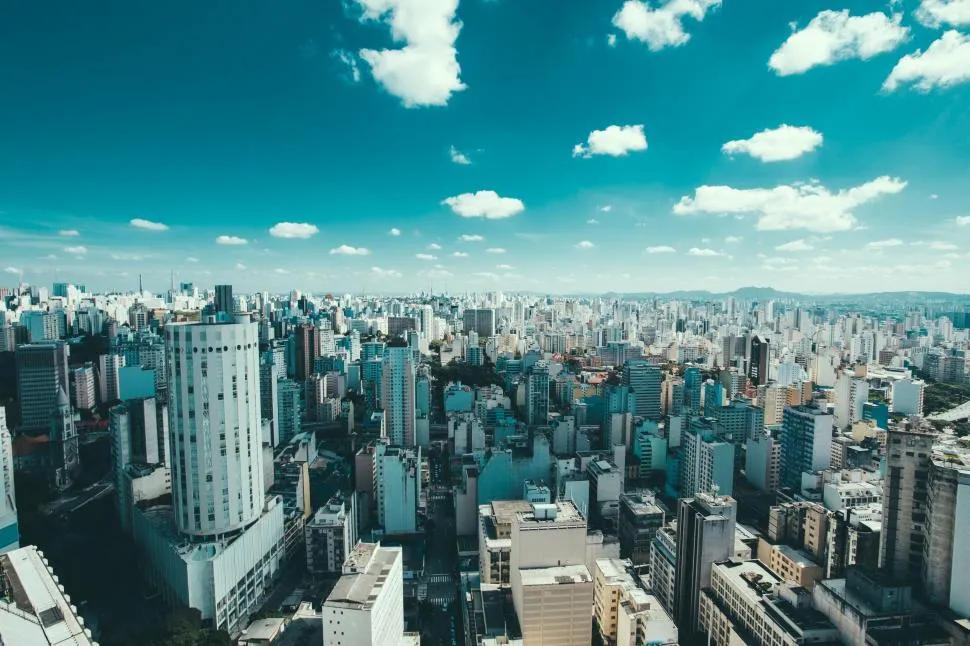
São Paulo may be Brazil’s biggest city, but it’s the local culture that makes this place truly special. This sprawling metropolis blends old-world charm with modern energy, where European-style architecture sits alongside sleek skyscrapers. The city’s food scene tells the story of its diverse heritage – you’ll find everything from traditional Brazilian churrascarias to high-end Japanese restaurants tucked into its bustling neighborhoods. Walking through areas like Vila Madalena, you’ll discover colorful street art and quirky cafes, while the Pinacoteca museum shows off Brazil’s artistic soul. It’s not the prettiest city you’ll ever see, but spend a few days here and you’ll understand why paulistas are so proud to call it home.
Paraty, Rio de Janeiro, Brazil
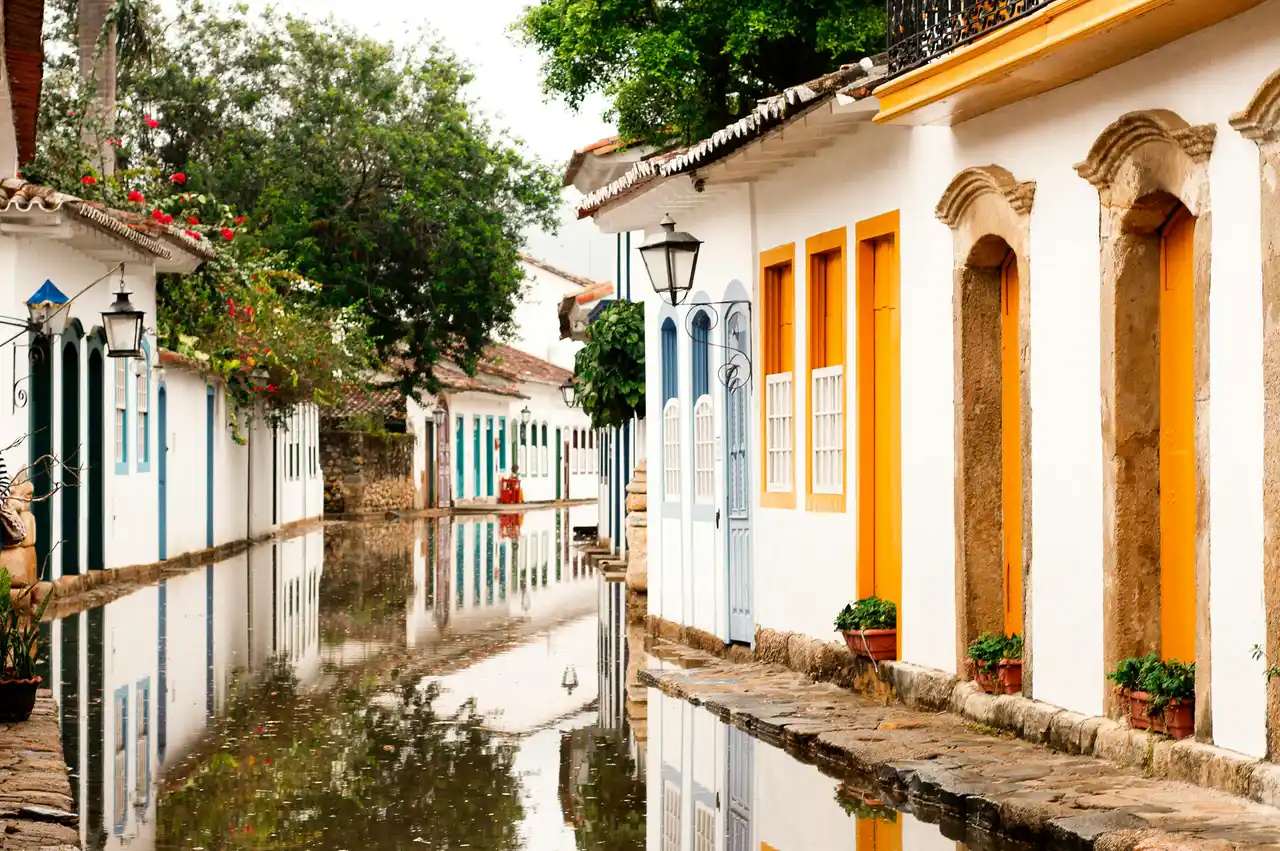
Step back in time when you visit Paraty, a charming colonial town where cobblestone streets meet the deep blue waters of Brazil’s coast. The historic center feels frozen in the 18th century, with white-washed buildings sporting colorful doors and windows that tell stories of Brazil’s gold rush era. Take a boat trip to explore the calm waters and hidden beaches of Paraty Bay, or join a guided walking tour through the car-free old town. For a taste of local culture, stop by one of the many cachaça distilleries, where you can learn about Brazil’s national spirit and sample the traditional drink in its purest form.
Lençóis Maranhenses, Brazil
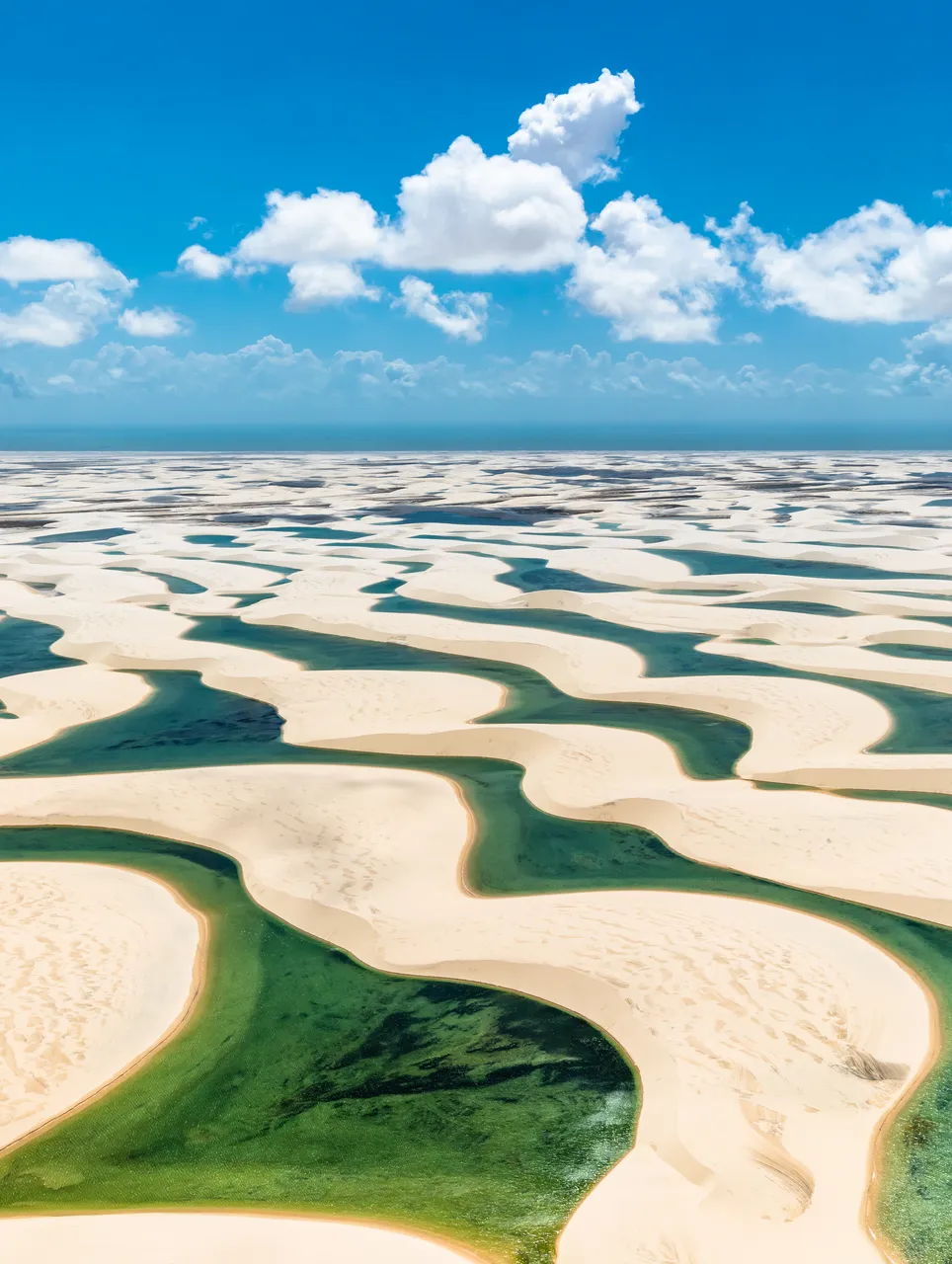
I always recommend checking out Lençóis Maranhenses to anyone visiting northern Brazil. Located in Maranhão state, this natural wonder is a unique landscape where endless white sand dunes meet thousands of crystal-clear freshwater lagoons, creating a mesmerizing pattern that stretches for miles. During the rainy season between July and September, the pools between the dunes fill up with rainwater, turning this desert-like environment into an oasis where you can actually swim.
Ouro Preto, Minas Gerais, Brazil

Of all the colonial towns I’ve explored in Brazil, none capture the spirit of the country’s golden age quite like Ouro Preto. This hilltop city, whose name literally means “black gold,” was at the center of Brazil’s 18th-century gold rush, leaving behind a legacy of baroque churches and winding cobblestone streets that climb up and down the mountainside. It’s not your typical Brazilian destination – you won’t find beaches or samba here – but those who venture inland are treated to one of South America’s best-preserved colonial towns, where every street corner tells a story of wealth, art, and revolution. The city’s church interiors showcase intricate woodwork and gold leaf details that would make even the most seasoned travelers pause in appreciation.
Natal, Rio Grande do Norte, Brazil
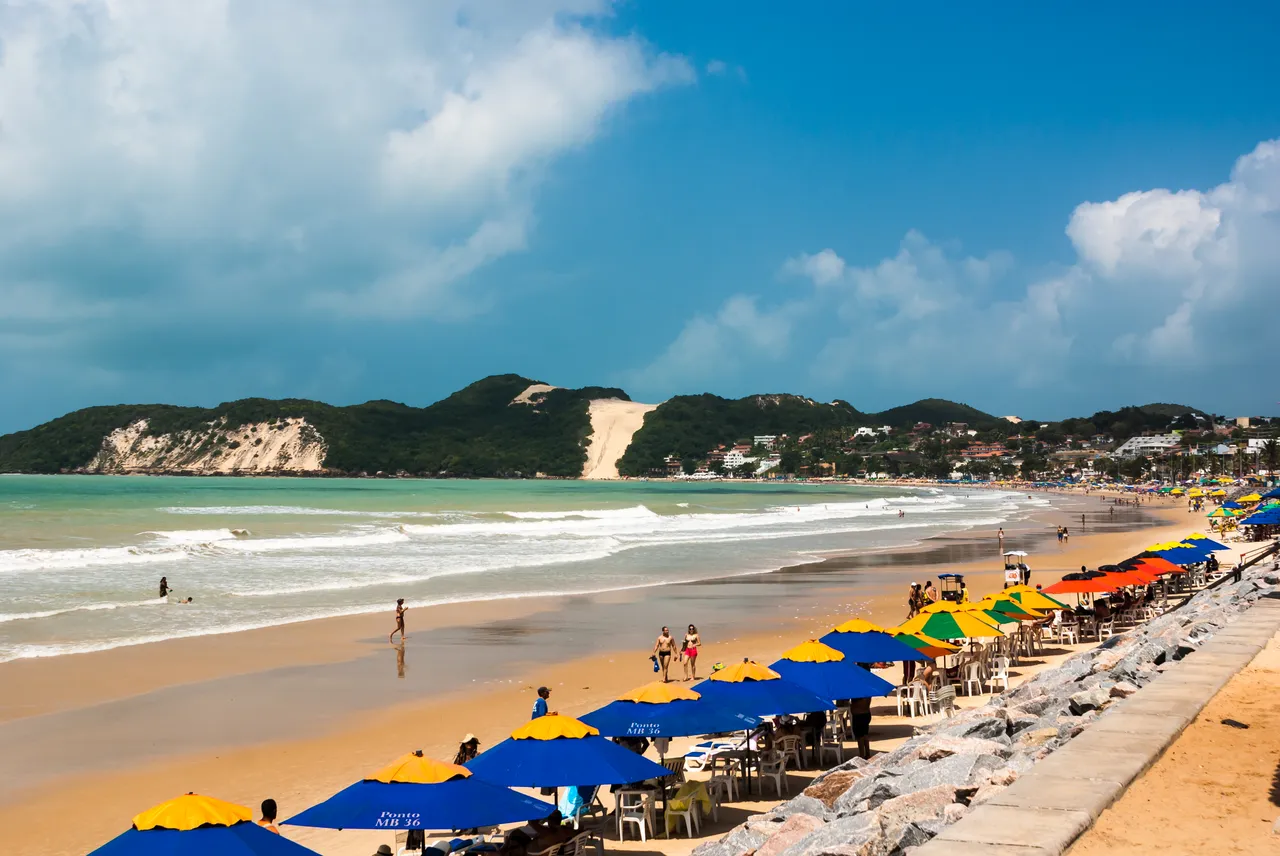
Located in the northeastern corner of Brazil, Natal has earned its reputation as “The City of the Sun” with over 300 days of sunshine each year. Like other coastal cities in Brazil, you’ll find soft sand beaches and warm waters perfect for swimming. But what sets Natal apart is the way nature and city life blend together so effortlessly. Take a stroll along Via Costeira, and you’ll see what I mean – pristine beaches on one side, modern hotels and restaurants on the other. Thanks to its strategic location during World War II, the city became an important American air base, and you can still spot remnants of this military history at Rampa Beach. Between the massive sand dunes of Genipabu, the world’s largest cashew tree, and the laid-back beach culture, Natal feels like a perfect slice of Brazilian coastal life without the crowds of Rio.
Porto de Galinhas, Pernambuco, Brazil
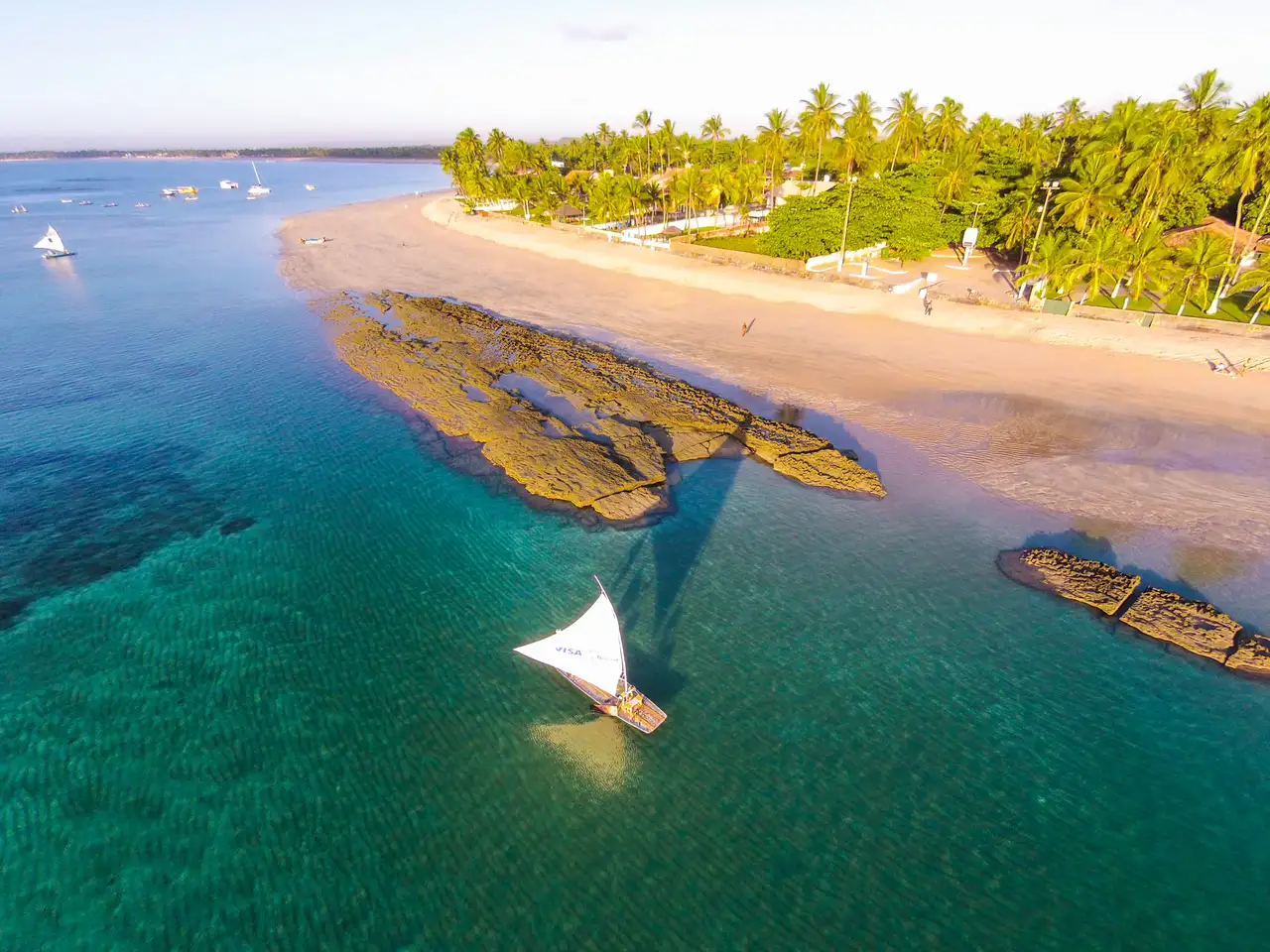
Nestled along Brazil’s northeastern coast, Porto de Galinhas stands out as one of my favorite beach destinations in the country. This former fishing village got its quirky name (“Port of Chickens”) from its history as a secret slave trade port, where traders would use the code word “chickens” for their illegal cargo. Today, it’s transformed into a laid-back beach paradise where natural pools form in the coral reefs at low tide, creating perfect spots for snorkeling with colorful fish. The calm, clear waters and long stretches of white sand make it ideal for families and beach lovers, while the nearby town offers plenty of local restaurants serving fresh seafood and traditional Brazilian dishes. It’s not the easiest place to reach – you’ll need to fly into Recife and drive about an hour south – but the journey pays off with some of the most pleasant beach experiences Brazil has to offer.
Búzios, Rio de Janeiro, Brazil
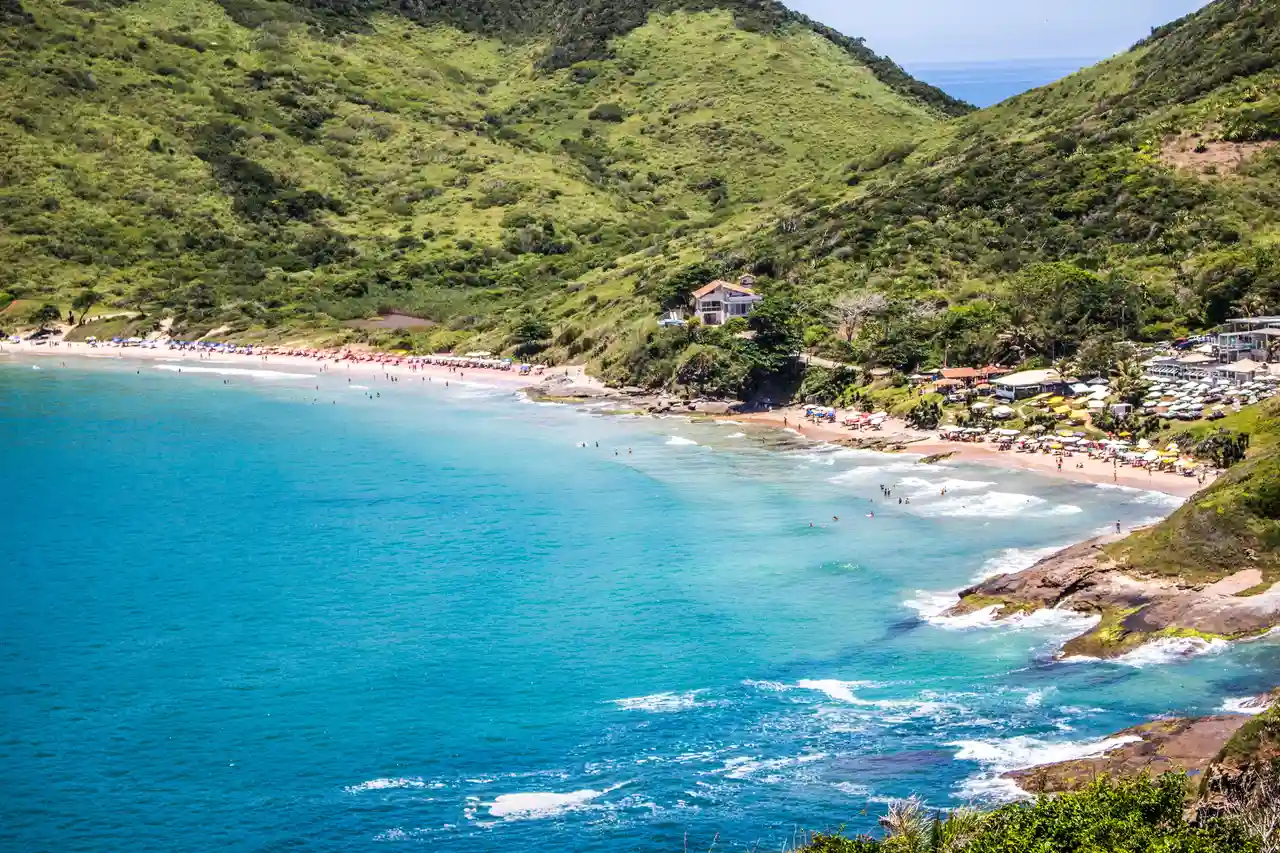
Buzios feels like a slice of the French Riviera dropped onto Brazil’s coast, and I can’t help but compare it to Saint-Tropez every time I visit. This former fishing village, just a few hours from Rio de Janeiro, has transformed into a favorite escape among both locals and travelers who come to explore its 23 different beaches. You’ll find yourself hopping from one golden stretch of sand to another, each with its own personality – from the calm waters of Ferradura Beach perfect for families to the livelier scene at Geribá where surfers catch waves all day long. The narrow cobblestone streets of Rua das Pedras come alive at sunset, with boutiques, restaurants, and bars filling up with people ready to experience Buzios’ famous nightlife. It’s not the quiet fishing village it once was, but that’s exactly what makes it special.
Pantanal, Brazil
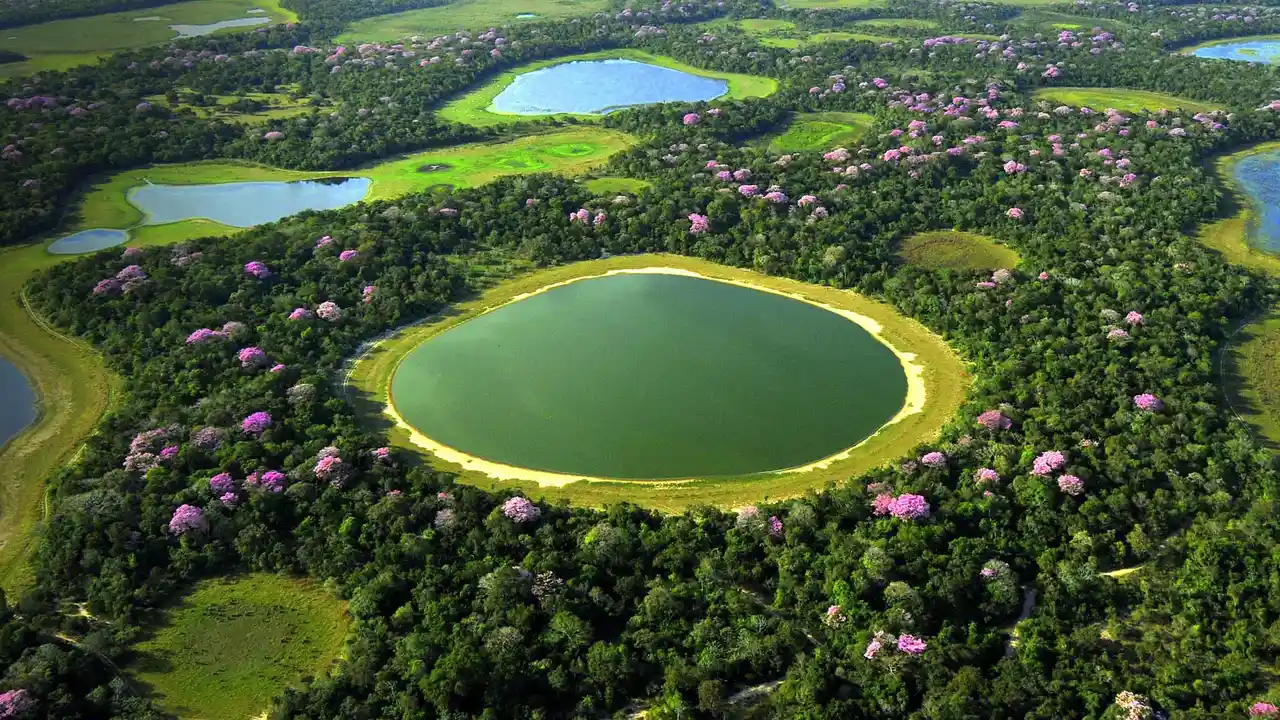
Immerse yourself in the world’s largest tropical wetland when you visit Brazil’s Pantanal, a natural paradise that’s twice the size of Florida. This vast wilderness is home to more than 1,000 bird species, 300 types of mammals, and countless reptiles, making it South America’s top spot for wildlife viewing. Take a boat tour along the Paraguay River to spot curious capybaras lounging on the riverbanks, or join a guided safari to track jaguars in their natural habitat. For a true local experience, stay at one of the traditional fazendas (ranches), where you can try horseback riding through flooded grasslands and learn about the everyday life of Pantaneiro cowboys.
Brasília, Brazil
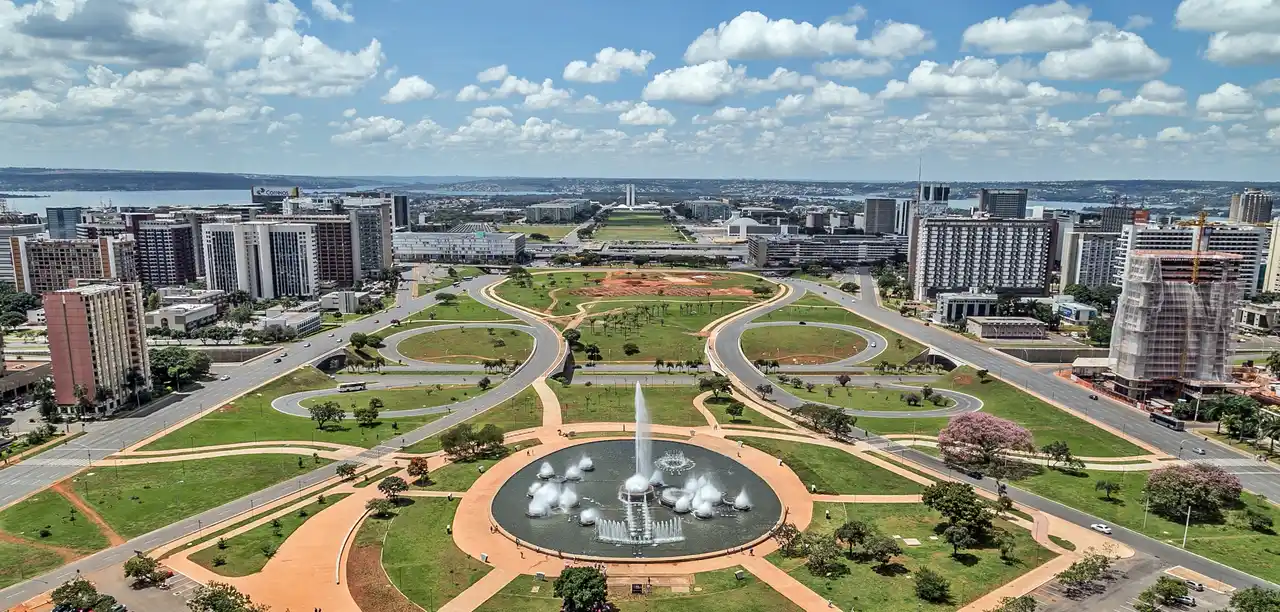
Experience modern architecture at its finest in Brasília, Brazil’s eye-catching capital city. Built from scratch in the 1960s, this planned metropolis features unique buildings designed by famous architect Oscar Niemeyer, including the bowl-shaped National Museum and the Cathedral of Brasília with its curved glass roof. Take a walk around Three Powers Square to see where Brazil’s government operates, or head to TV Tower for panoramic views of the city’s airplane-shaped layout. For a taste of local life, visit the Conjunto Nacional mall or enjoy fresh fruits and vegetables at the City Park on weekends.

